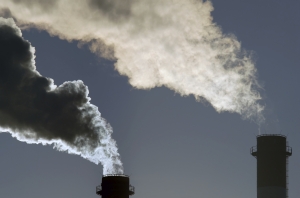The ambition of the government’s Clean Energy Target (CET) will not only establish the timeline for the phase out of emissions from Australia’s electricity sector, but will also have implications for the ‘effort sharing’ contribution of all sectors of the economy to meet Australia’s 26-28 per cent emissions target by 2030.
In this update, we examine a series of target scenarios for the CET, analysing the impact on the generation sector – and all sectors of the economy through to 2030.
Key findings include:
-
- Modelling indicates that a “minimum CET” of 28 per cent would reduce national emissions by 44 Mt of CO2e in 2030, an 8 per cent cut on 2005 emissions levels. This would leave a shortfall of 119 Mt to meet Australia’s 2030 target.
-
- Notably, such a trajectory would result in electricity emissions being phased out by 2095 – 2101, far later than a target of net-zero emissions prior to 2050 under the Paris Agreement.
-
- Should a 28 per cent target be applied across all sectors of the economy, modelling indicates that Australia’s emissions growth sectors – such as the direct combustion of oil and gas and transport sectors – would be liable for 31 and 32 per cent of all emissions reductions to meet the 2030 target, despite making up only 17 and 18 per cent of all emissions. Comparably, the the electricity sector – Australia’s largest emitting sector – would contribute only 20 per cent of all abatement.
-
- Under such a scenario, the LULUCF sector would, in theory, be free to increase emissions with LULUCF emissions currently over 100 per cent below 2005 emissions levels.
-
- An alternative CET of 45 per cent would achieve zero emissions by approximately 2045. Under this scenario, a 45 per cent CET would contribute a cumulative 424 Mt of abatement – or 41 per cent of Australia’s abatement task to meet a national 28 per cent reduction target by 2030.
-
- A 63 per cent CET target – equivalent to a reduction of around 10 Mt annually – would phase out electricity sector emissions a decade earlier, by 2035, contributing 619 Mt of cumulative abatement – or 60 per cent of Australia’s abatement task to meet a national 28 per cent target.
-
- In both the 45 and 63 per cent CET scenarios, we project downward pressure on wholesale electricity prices, with greater volumes of renewables to cause electricity supply to become more competitive and less influenced by high gas prices. In such scenarios, we estimate that wholesale electricity prices could fall towards $60/MWh within the first year of a CET mechanism.
- To access this report, please login below. To register interest please click here >>














